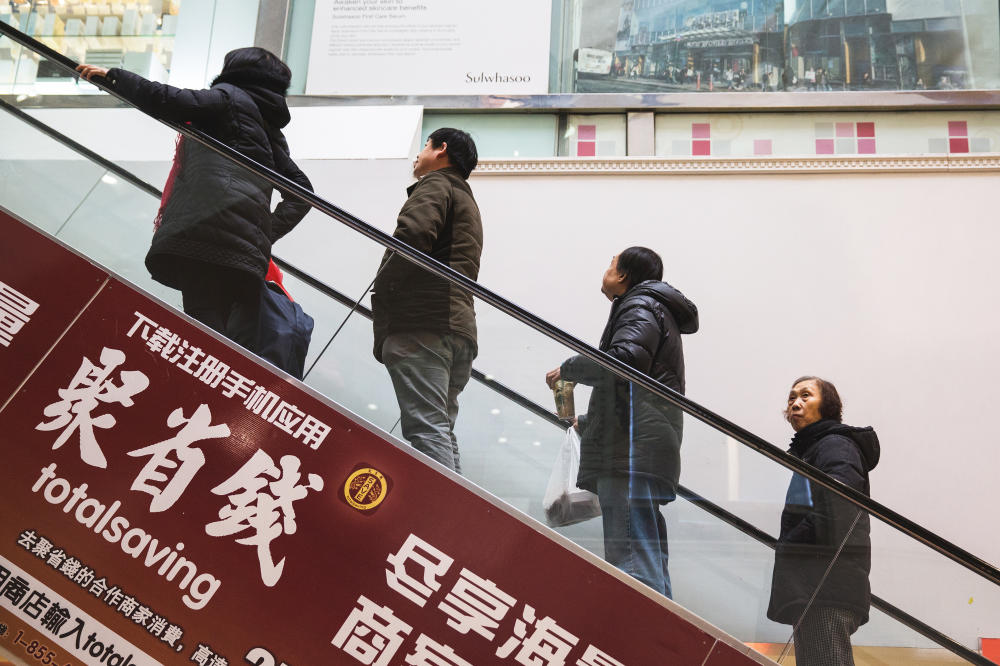If you want to meet some of the newest Chinese immigrants of New York City, don’t go to Chinatown in Manhattan.
Take the train to the Queens neighborhood of Flushing, where you’ll find newcomers who are reshaping the largest Chinese community of any city outside of Asia.
For decades, most Chinese immigrants in the U.S. have come from China’s southern provinces. But in recent years, more immigrants are coming from the north and landing in Flushing — including Geng Lei, an immigrant from the northern province of Shandong.
“There’s especially more people from the Northeastern provinces,” says Geng in Mandarin. She’s also seen more immigrants coming from Henan, a province that some consider northern.
Geng grew up in Shandong province, where, she says, she had a good job — as a musician, playing traditional Chinese music. She left to start a family with her husband, who was already working in America.
“Some people in China have gotten rich and want their children to go to school overseas. Plus, China’s environment and air quality aren’t good,” she explains as reasons why more northerners like her are coming to the U.S.
“What you notice now is a new group, much more diverse, coming from the north,” says Peter Kwong, a professor at Hunter College who’s studied Chinese immigrant communities. “You really see now the rest of China coming to New York City.”
Kwong says numbers about this group are hard to come by. But broadly, they tend to be from cities, and they’re often professionals, small business owners and government bureaucrats with the means to buy valid visas. Many are coming in search of economic opportunities and stability they couldn’t find in northern China.
“Many of these regions are much less developed than the south. So in the process of modernization, they’re the ones under a lot of pressure. A lot of people decide they want to leave,” Kwong says.
Walk through the streets of Flushing, and if you understand Chinese, you’ll quickly hear this is not your average Chinatown, where the southern dialects of Cantonese and Fuzhounese dominate. In Flushing, Mandarin is king, and it comes in lots of different accents.
Bon Yu, who moved from Shandong, says he’s noticing more Mandarin speakers in Flushing with northern accents. Hearing sometimes slight differences in tone have helped him feel less lonely in his new city. Yu still remembers the first time he heard an accent from his hometown of Qingdao, Shandong’s largest city.
“It felt like, ‘Oh my God, I finally found someone from my hometown,’ ” he says.
More northerners living in Flushing also means that restaurants here are redefining what Chinese food means in America.
An underground food court at the New World Mall offers a Chinese smorgasbord that includes dishes from Qingdao and freshly made Chinese-Korean-style dumplings from the Northeast — some of the latest ingredients to make up the centuries-long story of Chinese immigrants in America.
“For northern people, before they don’t really want to come out to America, but later on, people notice that maybe it’s better if you see more in the world,” says Sabrina Zhang, an immigrant from Liaoning.
Four years ago, she and her mother left Liaoning’s capital city, Shenyang, to join Zhang’s father in the U.S. Now, she’s studying for a degree in accounting and working part-time at the Flushing YMCA’s New Americans Welcome Center, where she helps other recent immigrants register for English classes.
She says Flushing is a good place to start.
“It’s still like in China. If you want to really get along with American people, you need to really know like what life they have. So if you still in Flushing, then maybe the life you see is still Chinese people,” she says.
Eventually, Zhang says, she wants to see even more in her new American world.
9(MDA3MTA1NDEyMDEyOTkyNTU3NzQ2ZGYwZg004))
